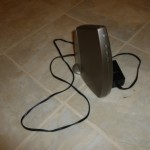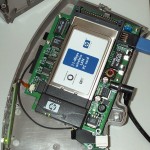Over the years I’ve used a lot of modems to connect to the Internet, starting with a 300 baud cartridge modem for a Commodore 64! In fact, I think hit all the major speed upgrades (300, 1200, 2400 9600, 14.4K, 28.8k, 33.6K, 56.2K) for analog POTS modems excluding the original 110 and a random 4800 bps in the middle. (I mean really, who didn’t wait for the 9600 baud modem?) The most impressive speed upgrade was from 300 baud to 1200 baud (four times faster! Now text would appear faster than I could read it!)
However, this post is about my more “modern” networking equipment over the last eleven years. Primarily DSL modems, with this one oddball thrown in:
Do you want wifi in your house? But are still using Dial Up Internet? The Lucent Orinoco RG-1000 modem / wifi gateway to the rescue. My model has a 28.8K modem built in (later models upgraded to a 56K). Don’t like easy web based configurations? No problem, it’s got you covered with a SNMP over the network configuration setup (which coincidentally is exactly the same as the original Apple Airport Base station!). Luckily somebody has made a Java tool that runs on Linux to configure it. If you need a spare PCMCIA Orinoco Silver 802.11 wifi card, you can open it up and harvest the one inside. It’s a historical oddity at this point, but I can’t bring myself to throw it out, on the off chance that I move somewhere where the only Internet I can get is dial up.
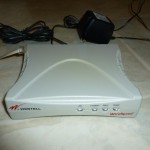
Ahh…the Westell B90 modem. It’s hard to forget your first DSL modem. The speed, The bandwidth!
It included both an ethernet port, and a USB port (in case your computer didn’t have an Ethernet port built in….remember back when Ethernet wasn’t built into every motherboard?)

The Motorola DSL Modem (Model 2210) is my all time favorite DSL modem due to it’s simple elegance. About the size of a deck of playing cards, it has only three jacks (Power, Telephone, Ethernet) and a reset button. The only way you could make a DSL modem simpler to is if it harvested it’s power supply off of the telephone hook line voltage.
What? You liked the built in WIFI of the Lucent RG1000? Why not start manufacturing DSL modems with a wifi access point in them?
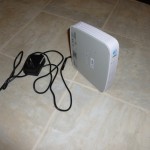
The 2wire 2701hg finally incorporated both DSL modem and wifi, but of course I still connected it to my own wireless gateway device because it didn’t support all of the configuration features I wanted. Why upgrade from the Model 2210 you might ask? I moved to a new house with a seriously substandard phone line (no, really, six months later I got AT&T to come out and on the 2nd visit the technician finally was able to measure the problem and moved the house to a different set of copper). The 2wire 2701hg had much better DSL performance than the Motorola 2210. (In that, it was able to get a signal at all, even if it did drop for an hour every day or two.)
You may notice that the size of my DSL modems was going in a downward direction until the 2701hg….well, when I switched to U-Verse all of my previous modems were no longer compatible, so I had to upgrade to the monster that is the 2wire 3600hgv. Seriously, this thing is big! The only thing bigger in my “networking area” is the UPS.
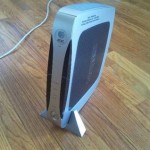
The first one worked great for 11 months, but then after a lightning storm it’s wired Ethernet ports stopped giving out DHCP addresses (DHCP over WIFI still worked!). The AT&T technician said that it has “DHCP in hardware” on the Ethernet ports, and replaced it under their 1 year warranty.
If anybody knows of a 3rd party U-Verse compatible DSL modem sized like the Motorola 2210, please let me know!
